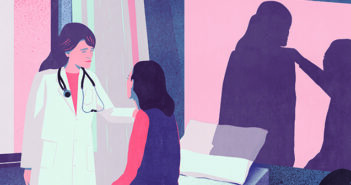Ask the Expert: Patrick McGann, MD, PhD
Sickle cell disease is a debilitating inherited blood disorder that disproportionately affects Black people. Many have further suffered in our historically biased health care system, which has dismissed their chronic pain and other symptoms. Last year the FDA approved two new gene therapies for sickle cell, which have life-changing potential—but cost up to $3 million. Patrick McGann, MD, PhD, associate professor of medicine and of pediatrics and director of the Lifespan Comprehensive Sickle Cell Center, says the price tag may be the lowest of the hurdles for patients seeking relief.
It is exciting that after nearly a century of stagnation in sickle cell research, new treatments are finally being developed. But we must carefully consider how these transformative therapies will be accessible and affordable for this often-neglected patient population.
I do think that Medicaid is going to figure out how to pay for this, as a matter of health equity. But all 100,000 Americans with the disease won’t have access—and I don’t think many will be interested right away, for many reasons. Taking out your cells, editing the genes—that’s a complicated process to understand or have trust in, particularly for a patient population with a very justified mistrust in medical research, new therapies, and our health care system. Building trust is an essential step to offering and providing any new therapy.
Furthermore, these therapies have been sensationalized. Patients aren’t going to walk into our clinic, we wave a wand, and they’re cured. From the time they say, “yes, I’d like this,” to when they finish treatment will likely take at least a year. Patients will need surgery to have a central line placed, require blood transfusions and chemotherapy, weeks- or even months-long hospital stays—and be out of work or school through much of the process. Short- and long-term complications may include infection, cancer, infertility, and many others.
For patients for whom sickle cell disease totally dominates their life—they’re in the hospital a lot, they can’t work or go to school, and every day is consumed by the disease—it’s a life-transformative treatment option. But it’s not a cure. While most symptoms are likely to get better, existing problems do not go away, and we still have many unanswered questions about the future.




